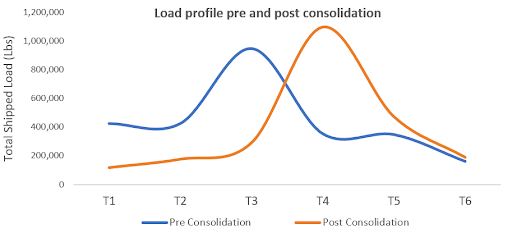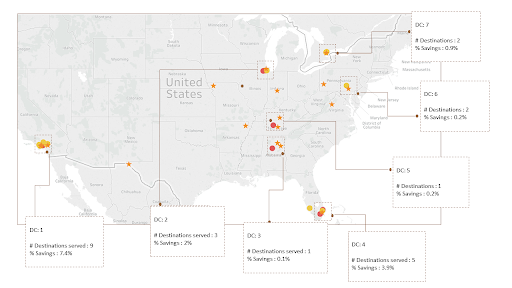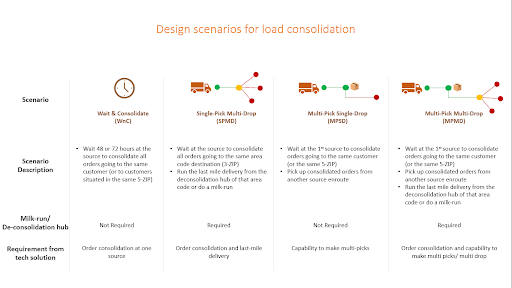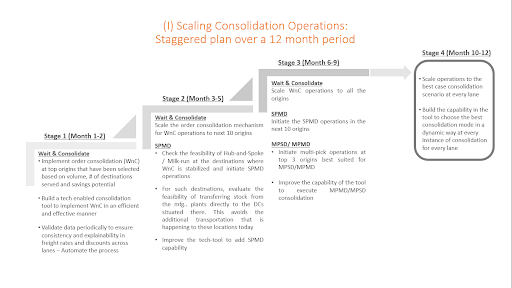
Have you ever wondered how the complexity in the supply chain ecosystem is influencing your freight spend? What are the factors affecting the overall freight management curve in the supply chain? How can an enterprise meet the 7Rs of Logistics whilst handling a huge amount of customer data and external factors affecting freight management? These are some of the common challenges Supply chain companies face (especially, during the outbound transportation process).
Some of the common impediments in transportation management can be listed as follows:
- Management of free or wasted space during the shipping process,
- Saving fuel costs, including expenses incurred during environmental checks/ regulations, fuel surcharges, etc.
- Managing manpower to deliver the product at the right time, etc
- Utilizing a thorough and transparent shipment process can help eliminate challenges like empty spaces in trucks. Supply chain management is a complex process which includes several components to be addressed at different levels. Logistic load consolidation is a popular trend in the T&L segment. It offers the Supply chain industry with a great advantage, for it saves cost.
Identifying a solution to evaluate & consolidate customer orders as well as save costs at the same time are the current shortcomings of a TMS (Transportation Management System) in the supply chain. So, how can an enterprise tackle this challenge while using technology?
Load Consolidation: Effect of Digital Disruption in the Freight and Logistics Industry.
The time-to-market goods with low (or no) defects, is one of the key challenges experienced by a supply chain enterprise. To meet customer demands vis-à-vis their in-time delivery expectations, along with a reduction in freight costs, companies are resorting to strategic load consolidation solutions in recent times.
What is Load Consolidation? Can it really help bring down the huge shipping costs?
Some of the key points to be considered in load consolidation include:
-
- More volume per truck means less dollar spent per pound
- Lesser truck means more organized operations
- Lesser truck availability problems
How to make sure that there is a cona solidation opportunity? What are the early indicators?
One of the commonly used terms in freight consolidation is load profile. Capturing the load requirement forecasts based on the existing or released orders, defines load profile in its crudest form. Can the analysis of a shipment load profile help understand consolidation opportunity? The answer is Yes!…
- If load profile is skewed towards lower tier LTLs (Less than Truck Loads) rather than Higher tier LTLs or FTLs (Full Truck Load), the possibility of merging loads and moving them from lower tiers to higher ones is quite high.
*Load Tier is assessed using the total weight of a load being shipped. Typically, 1-200 lbs of weight is a Tier 1 load whereas 10K-15K lbs is considered a Tier 6 load. Anything beyond 15K lbs is usually economical to be sent as Full Truck Load.

- If you have multiple Distribution Centers (DCs) with item mirroring of less than 70-80%, there is an opportunity to create multi-pick consolidation scenarios
- *Item Mirroring is a concept used in inventory management practices. In this process, an SKU item can be mirrored to be stocked in specific locations based on customer distribution. If there are more DCs, the percentage of mirrored SKU products across all locations must come down.
- If you have customers in clusters

- If your customers order has a known pattern
- If your average truck utilization is less than 60-70% (LCL or LTL)
What are the ways to consolidate load?
Within the logistics landscape, freight consolidation (a.k.a., Load Consolidation), freight procurement and its distribution play a pivotal role in saving transport costs for the company. Based on the availability of DCs and SKUs and the pattern of customer distribution (drop locations), the load consolidation practice can be categorized into:
Wait and Consolidate: This method can be applied in cases with known customer order pattern. The retailer can wait until the complete order is received (not in parts but in its entirety) and then place the shipment as an FTL.
Multi Pick Single Drop (or MPSD): This technique is applied when there is a non-availability of DCs in the surrounding area or a lack of “mirror-worthy” items. The retailer can use this opportunity to get the truck pick up the items/goods from multiple DCs and drop them at the customer’s doorstep.
Single Pick Multi Drop (or SPMD): During an increase in the number of drop locations (more customers from the same neighborhood), a retailer can use this method and ship the FTL (from one warehouse) to drop at multiple locations at one go.
Multi Pick Multi Drop (or MPMD): This method is similar to MPSD (Multi Pick Single Drop). When compared to MPSD, here the SKUs are collected from multiple DCs and dropped at multiple customer locations (in the same neighborhood).

How to bring actionability: Execution plan in freight management?
The load consolidation in the supply chain can help reduce operating costs and increase service levels at a significant rate when compared to the conventional supply chain approach. Here’s how load consolidation can dynamically provide effective, actionable outcomes in freight management.
-
- Identification of the top lanes for Single Pick and Single Drop scenarios.
- Identification of the top lanes for Multi-Pick scenarios.
- Identification of the top lanes for Multi-Drop scenarios.

Shipment or load consolidation does not only help reduce logistics costs but is instrumental in managing greenhouse gas emission (GHG) risks.
All in all, the contribution of data analytics in supply chain management is worth a mention, for it has significantly improved and optimized logistics operations with the help of techniques like load consolidation.
So, what is your take on this simple yet effective mechanism to reduce costs and improve efficiency of operations?
Please share your inputs in the comments section…
Topic Tags




